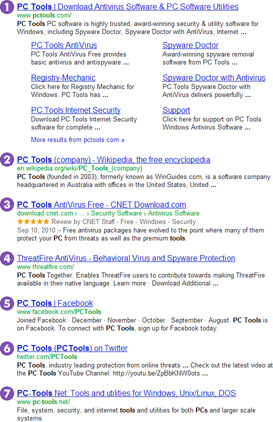
This has dramatically changed the way that results are coordinated by Google and, along with their ‘Penguin’ update, users can expect a more tailored results page. Google has launched what it terms the ‘Knowledge Graph’ but what everyone else refers to as ‘Semantic Search’. In essence, Google uses all of the information that it has to modify search results for each individual user.
They do this in a number of ways. One of them is their aggressive push to sign people up to Google+. Once you’ve created a Google+ account, Google would proceed to use the information provided in your profile, as well as taking into account your connections and your friends’ likes and so on, to ultimately produce a results page specific to you. Google’s ownership of YouTube also helps, as they’ll be aware of the kinds of videos and interests you have. They’ll also use localised results to provide users with information relevant to their surrounding area.
The biggest change that users may notice from Google, if they aren’t paying attention to SERP positions, is that in some cases Google has gone from a 10-results page to a 7-results page for approximately 20% of queries. This means that, for 1 in 5 search queries, your audience will be seeing fewer results per page. On top of that, these results will be altered based on the searcher’s needs.

Many companies may find that refreshing their website copy can help with higher Google rankings after these new patches. Blogs are similarly affected and writers are discovering a need to adapt from the old days. While keywords and tags in titles are important in appearing on SERPs, writers are finding that instead of the ‘write and forget’ mentality that came before, they are having to frequently revisit the content to make sure that they’re consistently ranking high on result pages.
This is all in an effort to weed out keyword-spammed articles and hastily rewritten content so that web users get the best surfing experience. These changes, from large overhauls to small tweaks, are here to stay and we can expect more shortly. One thing is certain, businesses will have to adapt to the new SERP algorithms, with Google accounting for 91% of search engine traffic, they can’t afford not to.









2 responses
Remarkable issues here. I’m very happy to see your post. Thanks a lot and I’m looking ahead to touch you. Will you kindly drop me a mail?
Google’s rise to success was in large part due to a patented algorithm called PageRank that helps rank web pages that match a given search string. When Google was a Stanford research project, it was nicknamed BackRub because the technology checks backlinks to determine a site’s importance.;